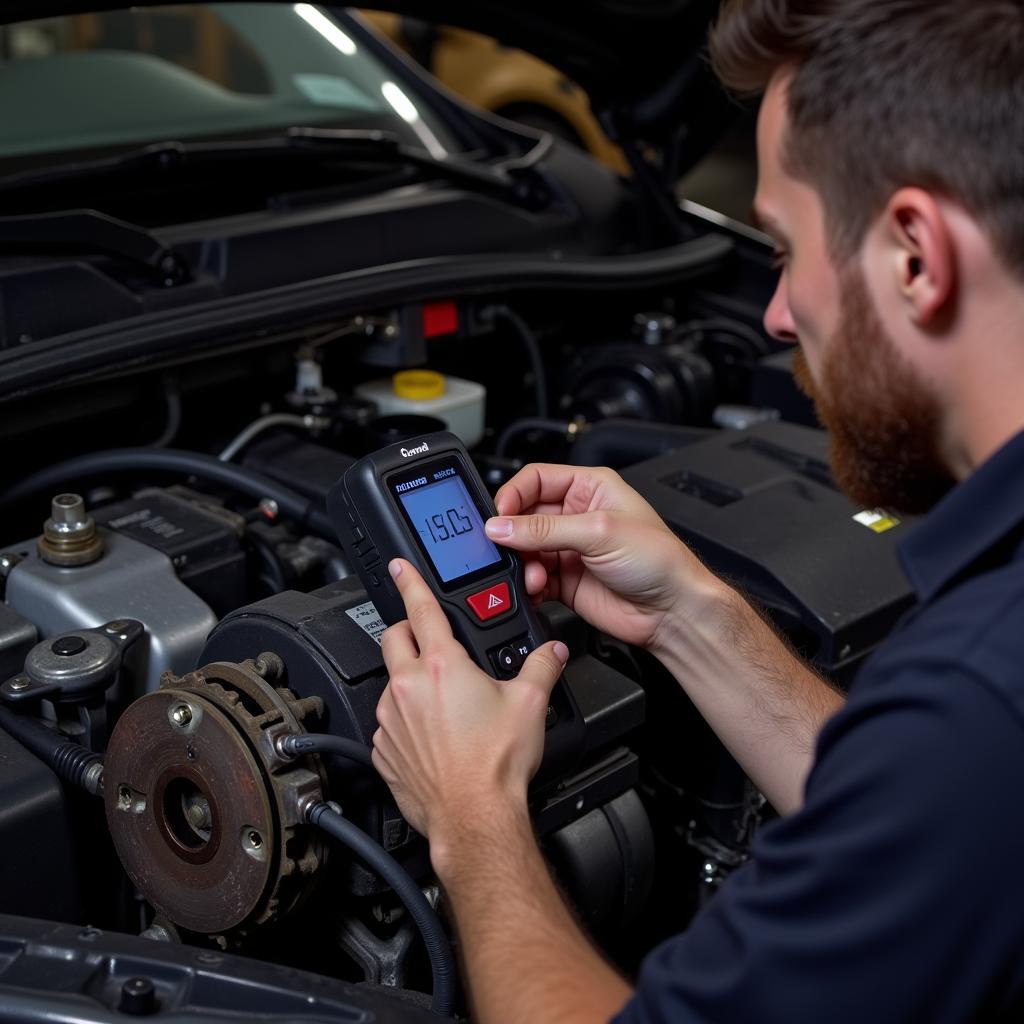The brake warning light on your Pontiac Montana dashboard is a crucial safety feature, designed to alert you to potential issues within your braking system. Ignoring this warning light could lead to dangerous driving conditions and costly repairs. This comprehensive guide will delve into the common causes of a Pontiac Montana brake warning light, provide step-by-step troubleshooting tips, and offer solutions for resolving the underlying issue.
Understanding why your brake warning light is on is the first step to ensuring your safety and maintaining your vehicle’s performance.
Common Causes of a Pontiac Montana Brake Warning Light
While a lit brake warning light can be alarming, it’s important to remember that it doesn’t always signify a major problem. Several factors could trigger the warning, some more serious than others. Here are some common culprits:
1. Low Brake Fluid Level
One of the most frequent causes of a brake warning light is low brake fluid. Brake fluid is essential for transmitting force from the brake pedal to the wheels, allowing your vehicle to slow down and stop.
How to Check:
- Locate the brake fluid reservoir under the hood of your Pontiac Montana.
- Check the fluid level against the “Min” and “Max” markings on the reservoir.
- If the fluid level is below the “Min” mark, it needs to be topped up.
 Low Brake Fluid Level in Pontiac Montana
Low Brake Fluid Level in Pontiac Montana
2. Worn Brake Pads
Brake pads are designed to wear down over time. When they become too thin, the brake warning light will illuminate to signal the need for replacement.
How to Check:
- Inspect your brake pads through the spaces between the wheel spokes.
- Look for a thin metal indicator that scrapes against the brake rotor when the pads are worn.
- If you hear a screeching or grinding noise when braking, it’s a strong indication of worn brake pads.
3. Brake System Leak
A leak in your Pontiac Montana’s brake system can lead to a dangerous drop in brake fluid pressure, triggering the brake warning light.
How to Check:
- Park your vehicle on a level surface and look for signs of fluid leaks underneath.
- Inspect the brake lines, hoses, and connections for any signs of wetness, dripping, or corrosion.
- Pay attention to any unusual smells, as brake fluid has a distinct odor.
 Detecting a Brake System Leak in a Pontiac Montana
Detecting a Brake System Leak in a Pontiac Montana
4. Faulty ABS Sensor
The Anti-lock Braking System (ABS) prevents wheel lockup during hard braking, enhancing vehicle control. A malfunctioning ABS sensor can disrupt the system and activate the brake warning light.
How to Diagnose:
- A faulty ABS sensor usually triggers the ABS warning light in addition to the brake warning light.
- Diagnosing an ABS sensor issue typically requires a specialized diagnostic tool.
5. Other Potential Causes
While less common, several other issues can trigger the brake warning light in your Pontiac Montana:
- Faulty brake caliper: A seized brake caliper can cause uneven brake pad wear and activate the warning light.
- Master cylinder failure: The master cylinder is responsible for generating hydraulic pressure in the braking system; its failure can lead to complete brake loss.
- Electrical problems: Issues with the brake light switch or wiring can also cause the warning light to illuminate.
Troubleshooting Your Pontiac Montana Brake Warning Light
If your Pontiac Montana’s brake warning light comes on, it’s crucial to address the issue promptly. Here are some troubleshooting steps:
-
Check the brake fluid level. As previously mentioned, this is the most common culprit. Top up the fluid if needed, but if you find yourself adding fluid frequently, it’s crucial to have the system inspected for leaks.
-
Inspect the brake pads. If your brake pads are worn down, they will need to be replaced. It’s recommended to have a mechanic inspect your brake rotors as well, as they might need resurfacing or replacement.
-
Look for leaks. Carefully inspect all brake components for any signs of leaks. If you find a leak, it’s crucial to have it repaired by a qualified mechanic immediately.
-
Consult a Professional. If you’ve checked the brake fluid, pads, and lines, and the warning light remains illuminated, it’s best to consult a qualified mechanic. Issues like a faulty ABS sensor, master cylinder failure, or electrical problems require specialized knowledge and tools to diagnose and repair.
Conclusion
The brake warning light in your Pontiac Montana is a crucial safety feature that should never be ignored. While a simple issue like low brake fluid can often be addressed with a quick top-up, a persistent warning light often signifies a more serious problem requiring professional attention. Remember, maintaining your vehicle’s braking system is paramount for your safety and the safety of others on the road. Regular maintenance and prompt attention to warning signs can prevent costly repairs and ensure a safe driving experience.

